
How to Use 12VDC 1 CHANNEL RELAY: Examples, Pinouts, and Specs
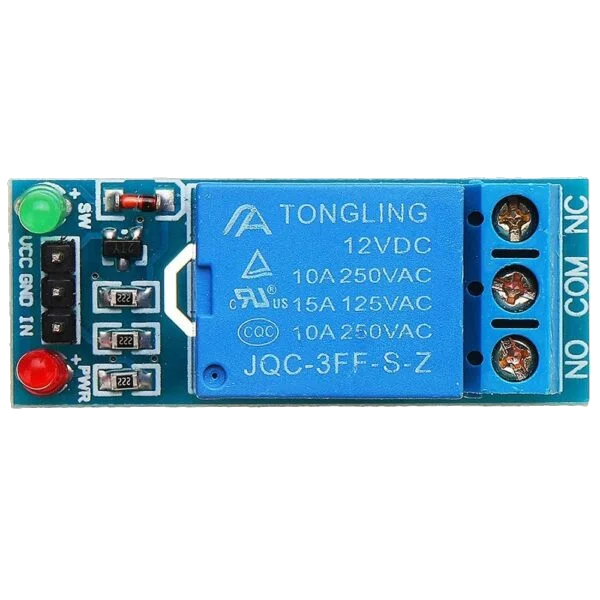
 Design with 12VDC 1 CHANNEL RELAY in Cirkit Designer
Design with 12VDC 1 CHANNEL RELAY in Cirkit DesignerIntroduction
The 12VDC 1 Channel Relay is an electromechanical switch that operates on a 12-volt DC input signal. It allows a low-power control signal to switch a higher power circuit, making it ideal for isolating and controlling high-voltage or high-current loads. This relay is commonly used in automation systems, home appliances, and microcontroller-based projects such as Arduino or Raspberry Pi applications.
Explore Projects Built with 12VDC 1 CHANNEL RELAY
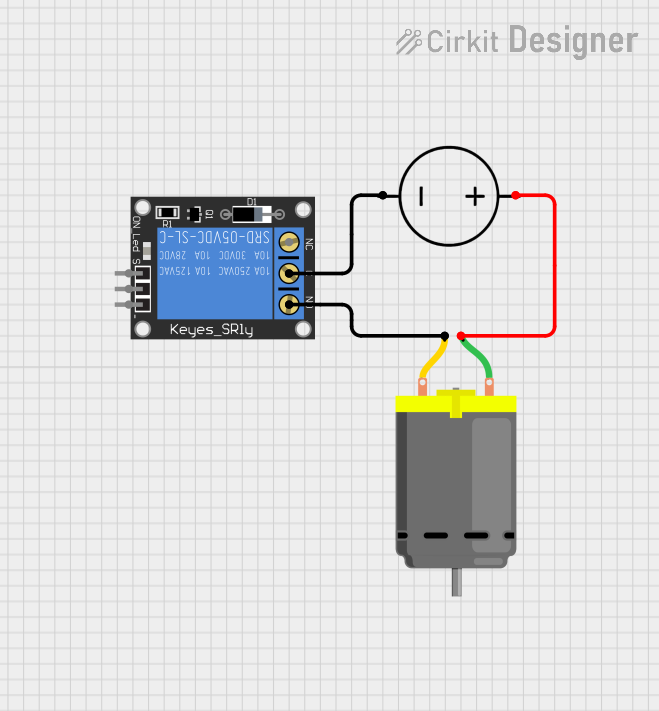
 Open Project in Cirkit Designer
Open Project in Cirkit Designer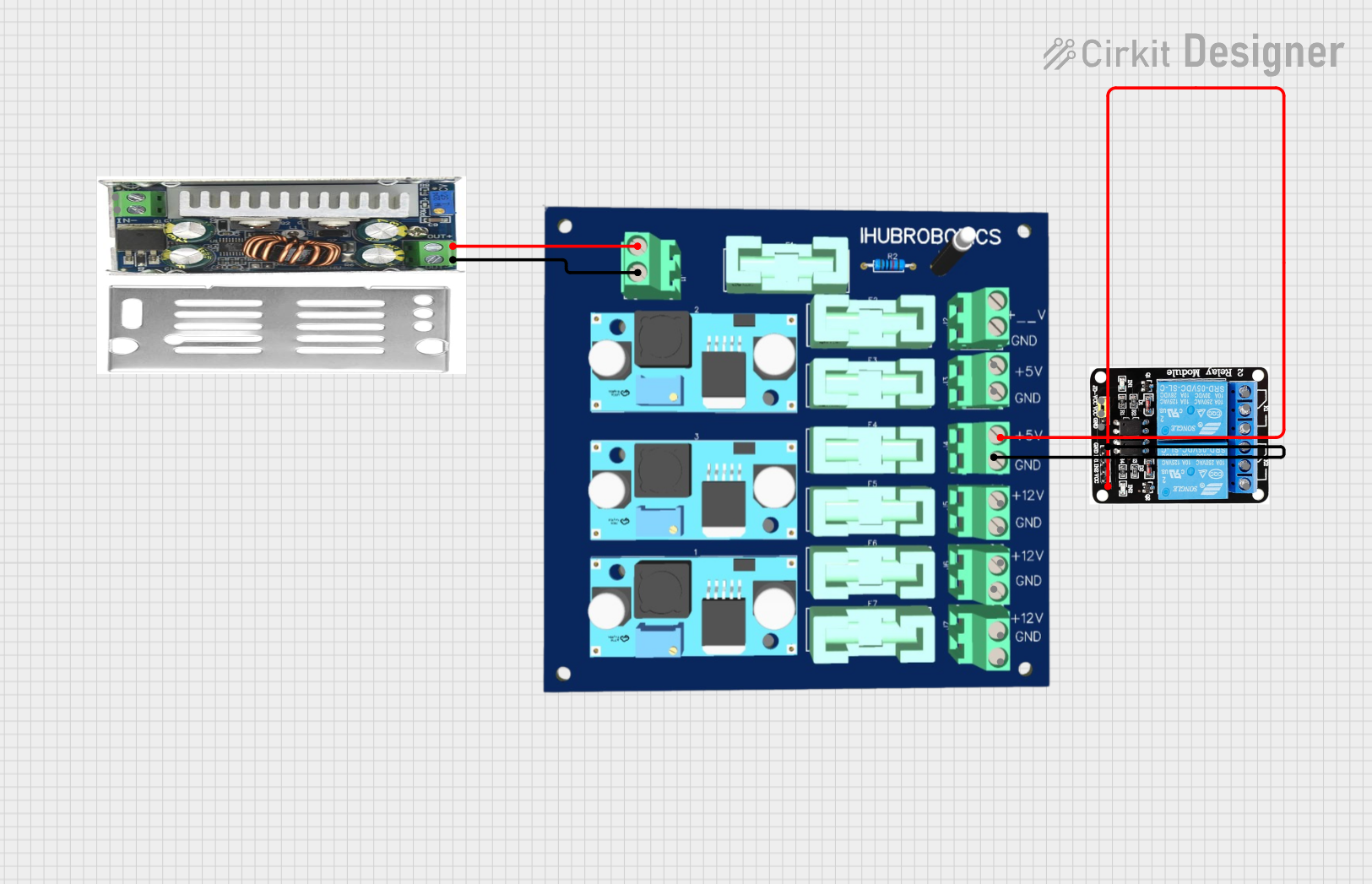
 Open Project in Cirkit Designer
Open Project in Cirkit Designer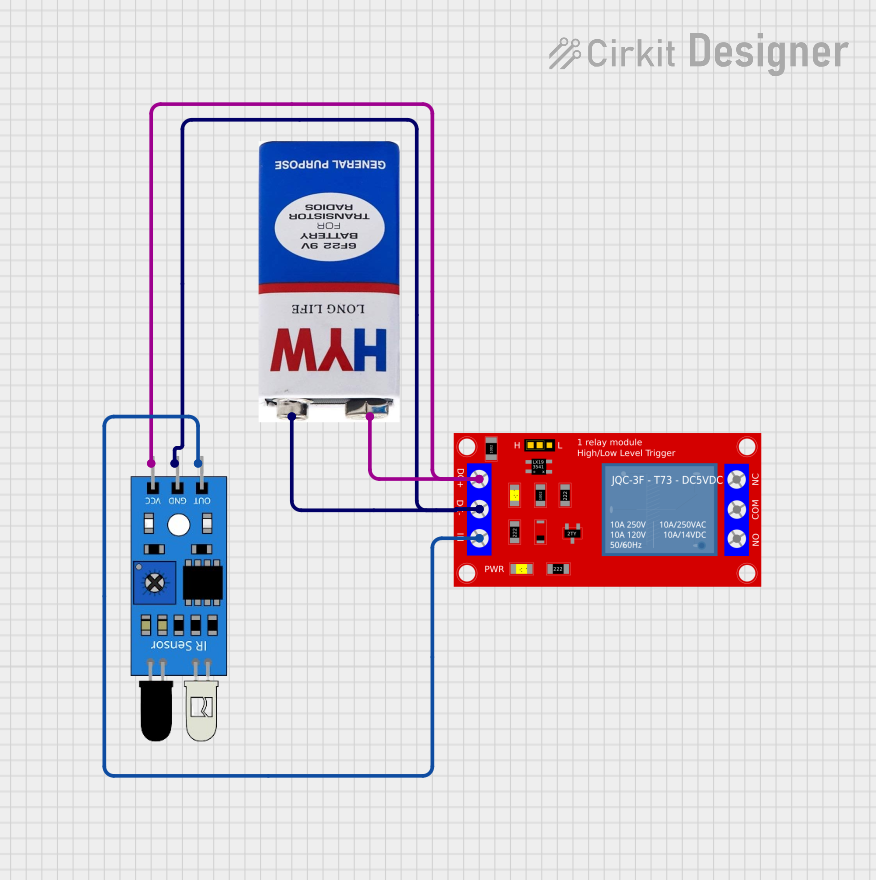
 Open Project in Cirkit Designer
Open Project in Cirkit Designer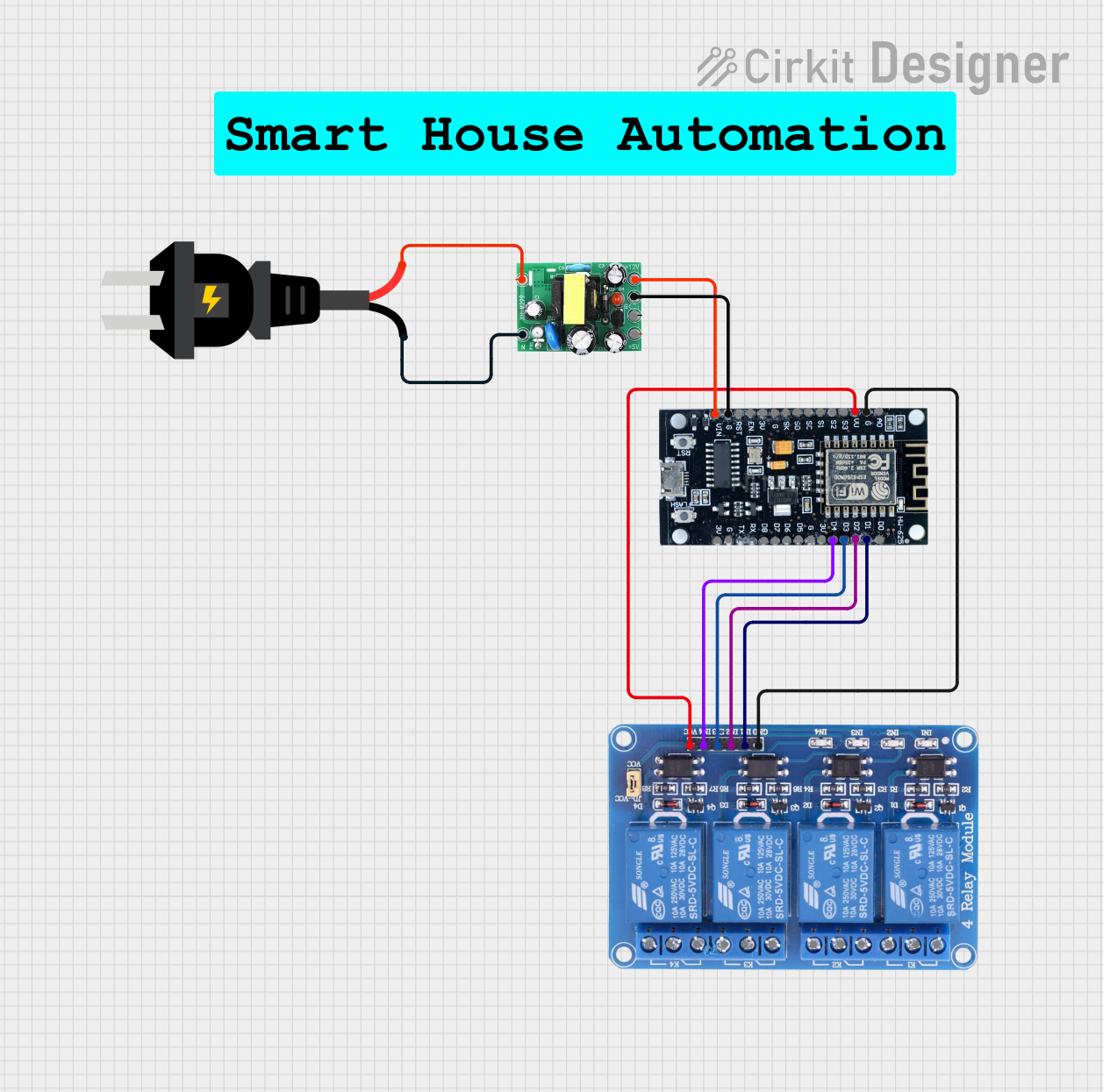
 Open Project in Cirkit Designer
Open Project in Cirkit DesignerExplore Projects Built with 12VDC 1 CHANNEL RELAY

 Open Project in Cirkit Designer
Open Project in Cirkit Designer
 Open Project in Cirkit Designer
Open Project in Cirkit Designer
 Open Project in Cirkit Designer
Open Project in Cirkit Designer
 Open Project in Cirkit Designer
Open Project in Cirkit DesignerCommon Applications and Use Cases
- Home automation systems (e.g., controlling lights, fans, or appliances)
- Industrial control systems
- Motor control circuits
- Microcontroller-based projects (e.g., Arduino, Raspberry Pi)
- Security systems (e.g., activating alarms or locks)
Technical Specifications
The following table outlines the key technical details of the 12VDC 1 Channel Relay:
| Parameter | Specification |
|---|---|
| Operating Voltage | 12V DC |
| Trigger Voltage | 3V to 12V DC |
| Maximum Load Voltage | 250V AC / 30V DC |
| Maximum Load Current | 10A |
| Relay Type | SPDT (Single Pole Double Throw) |
| Isolation | Optocoupler isolation |
| Dimensions | ~50mm x 26mm x 18mm |
| Weight | ~20g |
Pin Configuration and Descriptions
The relay module typically has 6 pins or terminals, as described below:
Input Pins (Control Side)
| Pin | Name | Description |
|---|---|---|
| 1 | VCC | Connect to 12V DC power supply. |
| 2 | GND | Connect to ground of the power supply. |
| 3 | IN | Control signal input. A HIGH signal activates the relay, and a LOW signal deactivates it. |
Output Terminals (Load Side)
| Terminal | Name | Description |
|---|---|---|
| 1 | COM | Common terminal. Connect to one side of the load or power source. |
| 2 | NO | Normally Open terminal. Connect to the load if you want it to be OFF by default. |
| 3 | NC | Normally Closed terminal. Connect to the load if you want it to be ON by default. |
Usage Instructions
How to Use the 12VDC 1 Channel Relay in a Circuit
- Power the Relay Module: Connect the VCC pin to a 12V DC power supply and the GND pin to the ground.
- Control Signal: Connect the IN pin to the control signal source (e.g., a microcontroller like Arduino).
- Load Connection:
- Connect the power source for the load to the COM terminal.
- Connect the load to either the NO (Normally Open) or NC (Normally Closed) terminal, depending on the desired default state of the load.
- Activate the Relay: When the IN pin receives a HIGH signal, the relay switches from its default state (NO to COM closes, or NC to COM opens).
Important Considerations and Best Practices
- Ensure the relay's load voltage and current ratings are not exceeded to avoid damage.
- Use proper insulation and wiring for high-voltage loads to ensure safety.
- If using with a microcontroller, ensure the control signal voltage matches the relay's trigger voltage.
- For inductive loads (e.g., motors), use a flyback diode across the load to protect the relay from voltage spikes.
Example: Connecting to an Arduino UNO
Below is an example of how to control the 12VDC 1 Channel Relay using an Arduino UNO:
Circuit Connections
- Connect the relay module's VCC to the Arduino's 5V pin.
- Connect the relay module's GND to the Arduino's GND pin.
- Connect the relay module's IN pin to Arduino digital pin 7.
- Connect the load (e.g., a light bulb) to the relay's COM and NO terminals.
Arduino Code
// Define the relay control pin
const int relayPin = 7;
void setup() {
// Set the relay pin as an output
pinMode(relayPin, OUTPUT);
// Ensure the relay is off at startup
digitalWrite(relayPin, LOW);
}
void loop() {
// Turn the relay ON
digitalWrite(relayPin, HIGH);
delay(5000); // Keep the relay ON for 5 seconds
// Turn the relay OFF
digitalWrite(relayPin, LOW);
delay(5000); // Keep the relay OFF for 5 seconds
}
Troubleshooting and FAQs
Common Issues and Solutions
Relay Not Activating:
- Ensure the VCC and GND connections are correct and the power supply is 12V DC.
- Verify that the control signal voltage is within the relay's trigger voltage range (3V to 12V DC).
- Check for loose or faulty wiring.
Load Not Switching:
- Confirm that the load is properly connected to the COM and NO/NC terminals.
- Ensure the load's voltage and current requirements are within the relay's rated capacity.
- Test the relay with a multimeter to ensure it is functioning correctly.
Relay Clicking but No Output:
- Check the wiring on the load side for proper connections.
- Verify that the power source for the load is functioning.
FAQs
Q: Can I use this relay with a 5V control signal?
A: Yes, the relay can be triggered with a control signal as low as 3V DC. However, ensure the VCC pin is powered with 12V DC.
Q: Is the relay safe for switching AC loads?
A: Yes, the relay can handle AC loads up to 250V and 10A. Ensure proper insulation and safety precautions when working with high-voltage AC.
Q: Can I use this relay with an inductive load like a motor?
A: Yes, but it is recommended to use a flyback diode across the load to protect the relay from voltage spikes caused by the inductive load.
Q: What is the difference between NO and NC terminals?
A: The NO (Normally Open) terminal is disconnected from COM by default and connects when the relay is activated. The NC (Normally Closed) terminal is connected to COM by default and disconnects when the relay is activated.